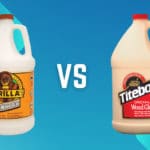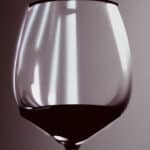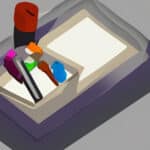PVA glue is water-soluble glue that craftsmen have used for years. It’s often used as an adhesive to make models and sculptures, but it can also be used in many other ways. For instance, it could be applied to the surface of a vase or bowl to give it a more finished look.
This article will discuss some common uses for PVA glue and how you might like to apply this material in your own home.
What Is PVA Glue?
PVA glue is a compound often referred to as “white glue.” The key component of PVA glue is polyvinyl acetate, the same compound found in PVC pipes and window caulking.
PVA glue is a water-soluble gel that makes it easier for your model to dry without getting clumpy. It also has long-term adhesion properties because the water evaporates from the glue while curing, locking the adhesive into place.
PVA glue is versatile when it comes to applications. It can be used on many different surfaces and materials. PVA glues are often used for crafting, woodworking, and home repair.
It can also seal bottles and jars as a coating on the inside. It is used in the insulation of electrical wires.
You might want to use PVA glue to seal the inside of your vases or bowls, so they don’t leak. You could also use this product around the cracks of your furniture where the air leaks. If you have books that are falling apart due to excess moisture, you could apply some PVA glue to the spines of the books to help keep them intact.
What are Common Use Cases of PVA Glue?
As an Adhesive
In the world of glues, there are two main types: water-based and solvent-based. PVA glue is water-based glue that cures at room temperature, meaning that it doesn’t react with anything else in the environment and doesn’t need to be heated up.
To Seal Paper Products
Another common use case for PVA glue is sealing envelopes or small packages that you might want to ship via mail. This type of adhesive can be found in almost any office supply store, so if you plan on sending out many parcels, this would be a good option.
To Seal Porous Materials
PVA glue is often used to bond together different types of wood, so if you are trying to put something like that together in your home, this would be the right type of adhesive for the job.
It’s important when using any kind of glue to make sure that it will stick to the material on which you are using it. If not, then there is a good chance that your project will fall apart as soon as someone comes in contact with it.
To Make Decoupage
In this case, PVA glue acts as an adhesive to bond layers of paper together to form one cohesive collage piece. It can also be used as a protective coating for these types of projects, ensuring that your paper’s ink doesn’t run and smudge.
To Make Slime
In this case, PVA glue is often referred to as Elmer’s Glue or school glue. It can form an adhesive film on top of liquid solutions, which makes it great for making slime.
What are the Advantages of PVA Glue?
PVA adhesive can be used on various materials, including paper, fabric, and even cardboard. Because water is the main component of PVA glue, making it an attractive option for sealing porous surfaces exposed to humidity.
It can be used indoors and outdoors, depending on the work involved. It is a versatile substance that can be used for several projects and helps deliver consistent results each time.
PVA glue will not normally irritate the skin like many other types of glue on the market, which is especially important for craft activities where children are involved. It can be used safely by people of all ages and skin types.
Related: How Long Does Wood Glue Take to Dry?
What are the Disadvantages of PVA Glue?
There are some disadvantages to PVA glue. PVA glue can be frustrating to work with as it takes a long time to dry. In the meantime, you have to place a wet cloth around the area you have just glued because if it gets air, the glue will start to dissolve and flatten.
PVA does take a long time to cure fully, which can be an issue for impatient people who want their projects finished quickly. It’s also not a very strong adhesive, making it unsuitable for all purposes.
If you are looking for a strong adhesive that dries very quickly, PVA glue is probably not for you. However, if you are just looking for something to hold small objects together temporarily, it may be worth giving PVA glue a try.
How to Remove PVA Glue?
PVA glue can be easily removed by just using soap and water. This means you don’t have to purchase any special cleaners or spend money on expensive, complicated methods.
If you’re looking for a quick solution to cleaning up small spills of PVA glue, grab a soft cloth and some regular dish soap, wet the cloth with the soap, and rub it against the PVA glue spill. The stubborn bits can be scrubbed away with this method, giving you a fresh surface to work on.
What is the Difference Between PVA Glue and Wood Glue?
PVA glue is more common than white or yellow carpenter’s wood glue because it can be washed off with water if it gets on your skin, which makes it safer to use around children. PVA glues don’t stink like carpenter’s wood glue, which is great if you’re allergic to smell.
Finally, PVA has more strength than carpenter’s wood glue but less strength than contact cement.
Carpenter’s wood glue is used for making repairs. It dries hard and clear, so it doesn’t appear on wood surfaces. It also smells bad, so you’ll need to use that type of glue far from where you are sitting.
The smell can take several hours to several days to go away, depending on the glue you are using.
Both types of glues come in large bottles, small tubes that you dispense with a plunger, or even packets that you spread into stencils. You should use only as much as necessary for each project because cleaning off surfaces once the glue is hard.
Conclusion
PVA glue is a versatile substance with many uses indoors and outdoors. It is safe and non-toxic, making it a great option for craft projects involving children. PVA glue dries slowly, so you need to be patient when working with it. However, it is easily removed with soap and water.





